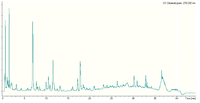Wine chemistry

Okay, let's talk about wine chemistry! When people make wine, they start by crushing grapes to get the juice. Inside the grape juice are lots of little parts called molecules, kind of like tiny building blocks. These different building blocks are what create the chemistry of wine.
For example, when you taste wine, you might notice that it has a sour or acidic taste. That's because of a molecule called tartaric acid. It's like adding lemon juice to your water, it makes it taste sour. Another molecule, called tannins, make the wine taste bitter and give it a dry feeling in your mouth, like when you drink tea that has been steeped too long. It comes from the grape skins, seeds, and stems.
A third molecule that you might notice in wine is alcohol. This is what can make you feel a little bit goofy when you drink too much. Alcohol comes from a reaction between the sugar in grapes and the yeast that starts to grow in the juice. Just like how when you bake bread, the yeast makes the dough rise.
There's lots of other little molecules in wine too, like esters that give it a fruity smell or terpenes that give it a flowery aroma.
So, in summary, wine chemistry is all about the different little parts that make up the flavors, smells, and feelings that you experience when you drink wine. It's like a complicated puzzle, and wine makers need to know how to put all of these pieces together to create a great bottle of wine.
For example, when you taste wine, you might notice that it has a sour or acidic taste. That's because of a molecule called tartaric acid. It's like adding lemon juice to your water, it makes it taste sour. Another molecule, called tannins, make the wine taste bitter and give it a dry feeling in your mouth, like when you drink tea that has been steeped too long. It comes from the grape skins, seeds, and stems.
A third molecule that you might notice in wine is alcohol. This is what can make you feel a little bit goofy when you drink too much. Alcohol comes from a reaction between the sugar in grapes and the yeast that starts to grow in the juice. Just like how when you bake bread, the yeast makes the dough rise.
There's lots of other little molecules in wine too, like esters that give it a fruity smell or terpenes that give it a flowery aroma.
So, in summary, wine chemistry is all about the different little parts that make up the flavors, smells, and feelings that you experience when you drink wine. It's like a complicated puzzle, and wine makers need to know how to put all of these pieces together to create a great bottle of wine.
Related topics others have asked about:
